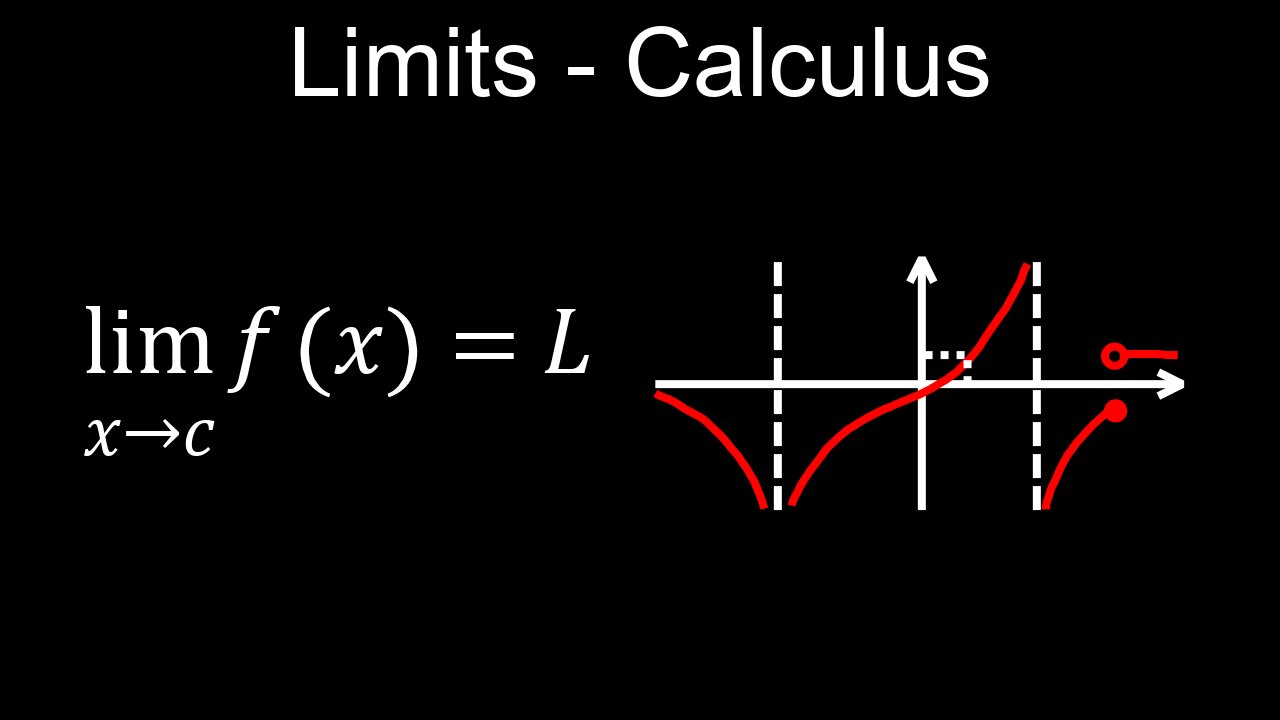Premium Only Content

Limits Explained, Definition, Examples, Worksheet, Practice Problems - Calculus
In calculus, a limit describes the behavior of a function as its input approaches a specific value, focusing on what the function gets infinitely close to, rather than its value at the exact point itself. Limits are fundamental because they are used to define continuity, derivatives, and integrals, which are the core concepts of calculus.
💡Key aspects of limits:
• Approaching a value: Limits look at what value a function "approaches" as the input gets closer and closer to a specific number, from both the left and the right sides.
• Not the function's value: The limit doesn't care about the function's actual value at the specific input point; it only cares about the behavior of the function near that point.
• Fundamental to calculus: Limits are the building blocks for understanding continuity, the instantaneous rate of change (derivatives), and the area under a curve (integrals).
💡How limits work:
• One-Sided Approach: To find a limit, you examine the function's behavior as the input approaches the target value from the left (values smaller than the target) and from the right (values larger than the target).
• Existence: A limit only exists if the function approaches the same value from both the left and the right.
• Notation: Limits are represented with the notation: lim f(x): means "the limit of the function f(x)". x → a: means "as x approaches a". For example, lim (x → a) f(x) = L is read as "the limit as x approaches a of f(x) equals L"
💡Why they matter:
• Defining Continuity: A function is continuous at a point if its limit at that point equals the function's actual value there.
• Defining Derivatives: The concept of a limit is used to define the derivative, which measures the instantaneous rate of change of a function.
• Defining Integrals: Limits are also used in the definition of definite integrals, which represent the area under a curve.
💡Worksheets are provided in PDF format to further improve your understanding:
• Questions Worksheet: https://drive.google.com/file/d/1IfdCaeJTszq4Is48tDhUUxlMd-w9Eltx/view?usp=drive_link
• Answers: https://drive.google.com/file/d/11PKq7Z-aEJQOqR_xbqFdAEQdQH4JjKnu/view?usp=drive_link
💡Chapters:
00:00 Why limits? Change at an instant.
01:08 Definition of a limit
01:57 Evaluate limits using graphs
03:27 Evaluate limits numerically using tables
04:39 Algebraic properties of limits
06:11 Evaluating limits using algebra
08:09 Examples on selecting methods for evaluating limits
13:24 Squeeze theorem
17:01 Examples on connecting representations of limits
🔔Don’t forget to Like, Share & Subscribe for more easy-to-follow Calculus tutorials.
🔔Subscribe: https://www.youtube.com/channel/UCJAvCW22EeE_2s2ZlJne7uQ?sub_confirmation=1
_______________________
⏩Playlist Link: https://www.youtube.com/playlist?list=PLm_WLG6GdV3vHdHSwImjsL4qzNf_9Qwlh
_______________________
💥 Follow us on Social Media 💥
🎵TikTok: https://www.tiktok.com/@drofeng?lang=en
𝕏: https://x.com/DrOfEng
🥊: https://rumble.com/user/DrOfEng
-
 LIVE
LIVE
TimcastIRL
36 minutes agoTrump DOJ Opens Probe Into Democrat Swalwell For Mortgage Fraud | Timcast IRL
15,188 watching -
 LIVE
LIVE
Nikko Ortiz
1 hour agoLATE NIGHT GAMING... | Rumble LIVE
2,880 watching -
 1:01:11
1:01:11
Donald Trump Jr.
7 hours agoThe China Matrix with Journalist Lee Smith | TRIGGERED Ep.291
69.6K61 -
 59:22
59:22
BonginoReport
3 hours agoWH Trolls Dems After Government Reopens - Nightly Scroll w/ Hayley Caronia (Ep.177)
40.5K26 -
 LIVE
LIVE
Dr Disrespect
9 hours ago🔴LIVE - DR DISRESPECT - ARC RAIDERS - NORTH LINE UPDATE
878 watching -
 LIVE
LIVE
Mally_Mouse
3 days ago🎮 Throwback Thursday! Let's Play: Stardew Valley pt. 32
94 watching -
 0:09
0:09
Tundra Tactical
8 hours ago🛑LIVE AT 6PM!! Guns And Games : Congress Calls For NFA Delete?? First Look Glock "V" and BF6 Later
4.74K1 -
 1:17:28
1:17:28
Kim Iversen
4 hours agoThe NIH’s Secret Newborn Genome Program — EXPOSED
33.7K40 -
 LIVE
LIVE
MissesMaam
1 hour agoTotally Not Arc Raiders | ARC NOOB 💚✨
115 watching -
 4:08:04
4:08:04
LumpyPotatoX2
4 hours agoArc Raiders: New Update - #RumbleGaming
4.47K2